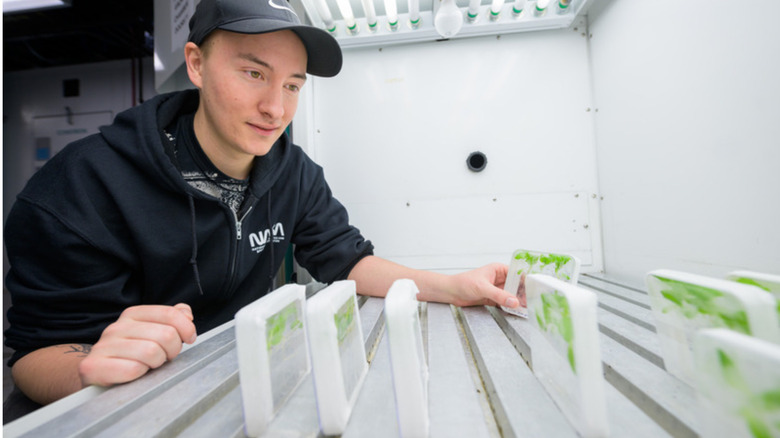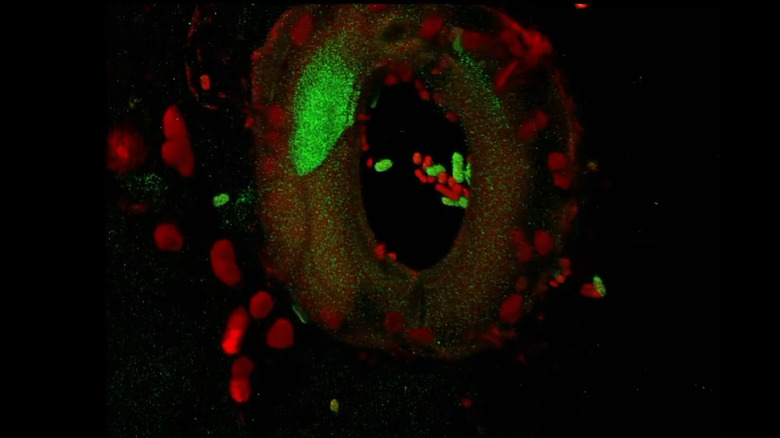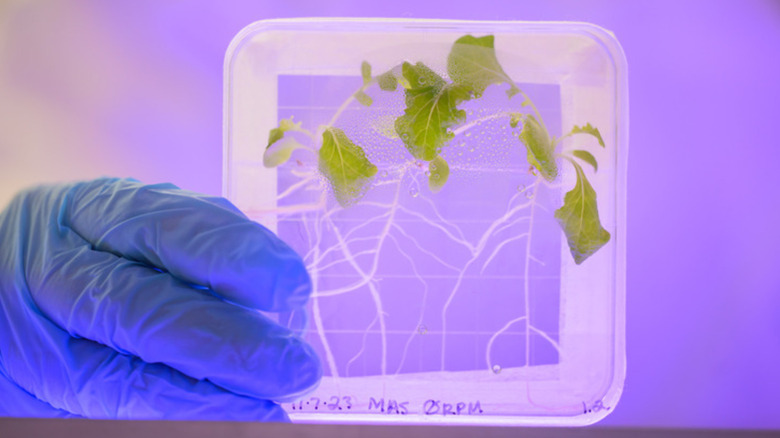This NASA-Funded Study Answers Why Astronauts Can't Have Salad In Space
Space exploration, especially when considering ambitious ideas such as establishing a base on the Moon, colonizing Mars, and venturing beyond with manned missions. Food supplies are a key concern, as growing them at scale for long-term missions is yet to materialize, re-supply journeys are time-consuming as well as expensive, and there are also chances of health mishaps if any aspect is ignored. Adding to the complexities is a pair of new research papers that claim eating leafy greens such as lettuce in space isn't a good idea due to risks of pathogenic contamination.
Experts at the University of Delaware conducted experiments on lettuce grown in conditions simulating the microgravity situation aboard the International Space Station. They found that plants become more susceptible to bacterial infection in space. Gravity is the key agent here. When plants lose their sense of direction and gravity, it affects not only their growth but also some crucial functions, including one that keeps harmful pathogens like salmonella at bay from wreaking havoc.
Among the multiple routes through which pathogens such as salmonella and E. coli enter a plant's system are stomata — the tiny pores found on the surface of leaves that allow gas exchange. During the tests, the team's lettuce habitats in space-like conditions had their stomatal pores open wider instead of closing as expected, leaving them prone to infection compared to the typical growth conditions on Earth. In a nutshell, eating a salad made from such space-farmed lettuce would be a risky business.
Shattering salad dreams
The findings, published in Nature and Scientific Reports, note that plants keeping their stomata open when exposed to salmonella was a surprise. To test their theory, the team mimicked the conditions aboard a space habitat by creating an artificial microgravity situation and continuously rotating the whole apparatus so that the plants lose their sense of direction, which they monitor using the root growth patterns. However, the team discovered another crucial vulnerability during their experiments.
On Earth, a chemical agent called UD1022 bolsters the immunity of plants against pathogens, but it failed to do its intended job against salmonella under microgravity conditions. That presents a fundamental problem without any solid solution or deep scientific research available to handle it. According to experts, the first line of defense is to use sterilized seeds that are superficially more resilient to microbial attack when grown in space. But that's not a fool-proof solution, considering the fact that the space stations are giant tubes with a ton of microbes across the bacterial and fungal ecosystems.
Plus, humans are home to various microbes, and floating habitats like the International Space Station could also be home to potentially dangerous life forms. "There is still a possibility that the assortment of microbial hitchhikers could include disease-causing pathogens that might make the crew sick," says NASA. The agency adds that owing to the extreme conditions in space, some can even make genetic changes and develop anti-microbial properties.
Long road ahead
The safest option going ahead, if astronauts hope to munch on leafy greens like lettuce on space missions, is to develop genetically modified plant varieties that don't fall prey to pathogens when cultivated in space. But that's easier said than done, as it takes years of trial and testing and accounting for the fact that resistance to one class of pathogens doesn't increase the resistance to another class of pathogens. In the case of the humble lettuce, the team is evaluating multiple varieties of the salad mainstay, each with different genetic makeup, to find those offering the safest growth in space-like conditions.
What's puzzling is that at this point, we don't know the extent to which plants are susceptible to attack by bacterial pathogens — including human-borne pathogens — when they are grown in microgravity. One of the papers notes that there is an "alarming knowledge gap" in this domain, especially in the wake of the unintentional introduction of pathogens that have hitched a ride to the space station through food supplies. The findings are worrisome, as they effectively confirm that pathogens can bypass a plant's native immunity when grown during spaceflights destined for long-term missions.
NASA astronauts have enjoyed red lettuce grown in space, but only after years of vetting. So far, there have been no instances where a pathogenic infection or food-related outbreak has happened on the space station. However, past research has clarified that pathogens like Salmonella also become more dangerous in space.


